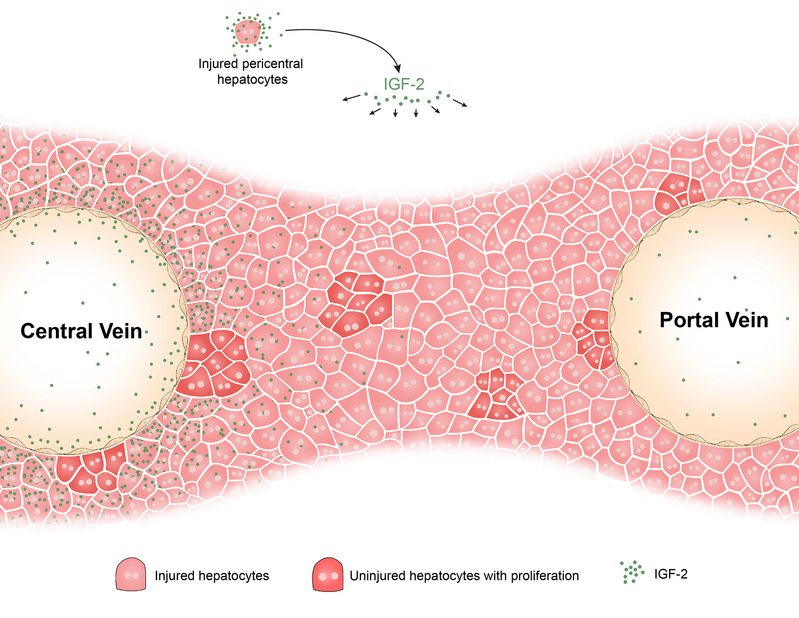A team led by Assistant Professor Huang Pengyu at ShanghaiTech University’s School of Life Science and Technology, collaborating with Sun Yat-sen Memorial Hospital at Guangzhou, found an important role of IGF-2 in liver regeneration induced by some chronic liver injuries. Their work entitled “Pericentral hepatocytes produce IGF-2 to promote liver regeneration during special injuries” was published online in Hepatology on June 27th, 2017.
Based on partial hepatectomy, an excellent liver regeneration animal model, the mechanisms of liver regeneration have been studied for nearly one hundred years. However, in most clinical scenarios, liver regeneration only occurs when liver injury is induced by hepatotoxins, virus infections, metabolism defect, or hereditary diseases. Lack of an appropriate animal model makes it difficult to study the liver regeneration process during these chronic liver injuries.
Dr. Huang’s team analyzed several chronic and acute liver injury mouse models and found that during some chronic liver injuries, pericentral hepatocytes secrete IGF-2 to promote liver regeneration. This work supported that acute and chronic liver injuries utilize different mechanisms to recover.
Using Fah deficient mouse, a Type I tyrosinemia mouse model, Dr. Huang’s team found that only injured pericentral hepatocytes were capable of secreting IGF-2, while healthy hepatocytes expressed the receptors of IGF-2 and responded to IGF-2. They also found similar mechanisms in liver samples of chronic liver injury patients.
Graduate student Liu Junlai, Dr. Hu Xiao and Chen Jie are the co-first authors and Dr. Huang Pengyu and Dr. Chen Tao are the co-corresponding authors. This work was supported by start-up funding from ShanghaiTech University and grants from The National Key R&D Program and National Natural Science Foundation of China.
Read more at: http://onlinelibrary.wiley.com/doi/10.1002/hep.29340/full

- About
- News
- Faculty
- Research
-
Academics
- School of Physical Science and Technology (SPST)
- School of Life Science and Technology (SLST)
- School of Information Science and Technology (SIST)
- School of Entrepreneurship and Management (SEM)
- School of Creativity and Art (SCA)
- Institute of Humanities (IH)
- School of Biomedical Engineering (BME)
- Shanghai Institute for Advanced Immunochemical Studies (SIAIS)
- iHuman Institute
- Institute of Mathematical Sciences (IMS)
- Center for Transformative Science (CTS)
- Institute of Carbon Neutrality (ICN)
- Shanghai Clinical Research and Trial Center
- Tech Transfer
- Global
- Campus Life

